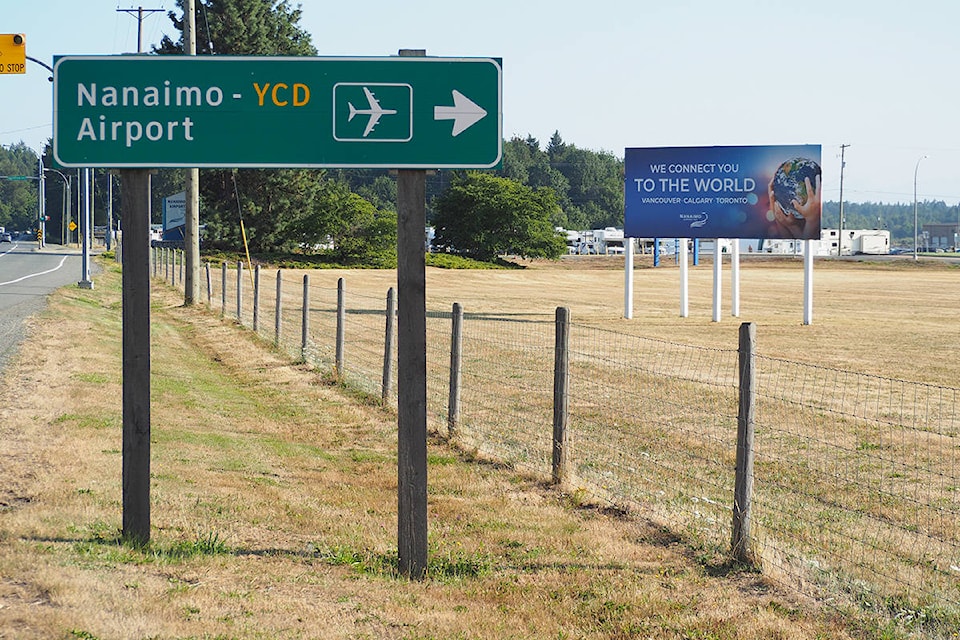The regional district is looking to amend land-use plans in order to spur development at the Nanaimo Airport.
The airport is situated partially on 211 hectares of land owned by the non-profit Nanaimo Airport Commission. According to a Regional District of Nanaimo staff report, if approved, draft amendments to the regional growth strategy, Electoral Area A official community plan and a zoning bylaw will be used as materials for future public consultation. It is hoped they will “facilitate development of the airport, as well as commercial uses complementary to the airport on the portion of the property adjacent to the Trans-Canada Highway,” the report said.
Kim Fowler, RDN manager of long-range planning and energy and sustainability, said the commission and RDN share land-use jurisdiction, with aeronautics-related development under commission purview, through exclusive federal authority. Uses not related to that are subject to RDN bylaws.
The commission can do its own land-use planning, said Fowler, and the RDN is essentially being consistent with that in its amendments, but with zoning that goes into more detail.
Airport lands are currently zoned for uses including agriculture, home-based business and residential, but amendments would see a new Nanaimo Airport 1 zone, according to the report, with two areas. Development Area A would encompass land on Spitfire Way, Mustang Road and the terminal building area. Development Area B would encompass an area along the Trans-Canada Highway corridor, but wouldn’t include parking areas.
RELATED: RDN board approval sought for busing to airport
RELATED: Nanaimo Airport second-busiest Island airport
RELATED: Nanaimo Airport terminal expansion breaks ground
Permitted uses for Development Area B would include fast food restaurants, convenience stores, gas stations, hotels, pubs, offices, restaurants, retail stores, tourist information booths and transit exchange. Airport and agriculture usage would be permitted uses for Development Area A.
Maximum building height for hotels would be the lesser of 15 metres or four storeys, while maximum building height for other structures would be the lesser of 10 metres or three storeys. Minimum setback requirements would be 10 metres for front lot lines and five metres for all other lot lines, according to the report.
OCP amendments would add language intended to safeguard the nearby Cassidy aquifer, recognize “sensitivities” of Agricultural Land Reserve lands and riparian and residential areas and stop or limit adverse effects coming from development. It would also recognize the airport as a hub for the economy and transportation for the region.
At the RDN July 23 board meeting, directors voted to refer amendments back to staff for consultation with area fire departments regarding fire regulations, as there is concern about firefighting capacity for multi-storey buildings, according to Fowler.
Mike Hooper, Nanaimo Airport president and CEO, said the airport appreciates the co-operation it receives from its partner groups and will follow the RDN process with interest.
reporter@nanaimobulletin.com
Like us on Facebook and follow Karl on Twitter and Instagram
